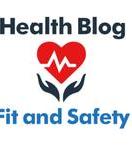Indoor air quality (IAQ) is an important environmental parameter for human comfort and wellbeing. It can affect cognitive performance, increase respiratory and heart disease risk, and cause fatigue and irritation.
During COVID-19, indoor air quality has become even more important. Leading experts suggest COVID-19 transmission and mortality can be exacerbated by certain air quality conditions.
We know that keeping the air we breathe clean is important, but how exactly do you start?
In this blog, we’ll cover 7 best practices to keep in mind when providing healthy indoor air to your occupants.
1. Choose the right air filters for your unique needs.
Air filters come in a variety of designs, efficiencies, and prices. Using guidance from ASHRAE, ensure that you have the highest-performing filter possible for your unique situation – taking into account HVAC system and ventilation set up. Using a MERV-13 or better filter class will ensure you are cleaning the air sufficiently before it enters the space.
2. Properly seal your air filters for best performance.
Your filters will not do their job correctly if there is a leak or hole in the installation. Air containing particles and pollutants will bypass the filter through cracks or crevices and enter the space before being properly filtered. Make sure filters are sealed tightly with no space between the filter media and its installation location.
3. Ensure an adequate number of air exchanges in spaces.
In order to maintain fresh air levels, you will need ensure your HVAC system set up and ventilation efforts are flushing out dirty air regularly. If air filters alone are not achieving desired exchange rates, introducing a portable air cleaner may be effective in providing fresh air.
4. Conduct regular cleaning to reduce pollutant levels.
Certain items in your building will produce contaminants that can be harmful to human health. Examples of these include volatile organic compounds (VOCs) from upholstery, paints and aerosols; as well as particulate matter (PM) from machinery and dust-carrying objects. By conducting routine cleanings, you can reduce the number of particles and gasses that enter the air.
5. Remove potential sources of pollution.
There are times when indoor pollution comes from inside a space. This can occur when an anomaly takes place – like a chemical spill, fire, or machine breakdown. When indoor air quality becomes compromised by an event like this, it is important to remove the source of the issue as early as possible.
6. Consider air cleaning machines when necessary.
Portable air cleaners can be effective in reducing indoor air pollution within enclosed spaces. These machines often contain filters that separate pollutants from the air, but can also leverage technology like Ultra-Violet Germicidal (UV-G) Lightbulbs that can deactivate viruses and contaminants. Using an air cleaner is recommended when filters do not provide adequate fresh air levels alone.
7. Implement continuous IAQ monitoring.
Continuous indoor air quality monitoring is a great way to assess, improve and maintain healthy indoor air quality. With this process, IAQ sensors are used to gather data on the indoor environment. Sensors measure pollutant levels such as carbon dioxide, volatile organic compounds, particulate matter and more. Using this 24/7, real-time data, you can track trends in your air to identify problem areas and resolve them. Read the complete guide to IAQ monitoring to learn more.

